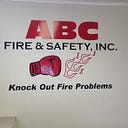The Role of Fire Suppression Systems in Building Safety
Introduction:
Fire suppression systems play a crucial role in safeguarding buildings and occupants against the devastating effects of fires. These systems are designed to detect and suppress fires rapidly, limiting property damage, preventing injuries, and saving lives. Understanding the importance of fire suppression systems in building safety is essential for property owners, developers, architects, and fire safety professionals. This article explores the various aspects of fire suppression systems and their vital role in enhancing building safety.
Types of Fire Suppression Systems:
Fire suppression systems encompass a variety of technologies designed to extinguish fires or control their spread. Common types include sprinkler systems, clean agent systems, foam systems, and gas suppression systems.
Each type of system has unique characteristics and applications, making it suitable for different fire risks and environments.
Early Detection and Rapid Response:
Fire suppression systems are equipped with sensors, detectors, and alarms that provide early detection of fires.
Upon detection, these systems initiate a rapid response, deploying extinguishing agents to suppress the fire before it can escalate.
Limiting Fire Spread and Damage:
By suppressing fires in their early stages, fire suppression systems help prevent the rapid spread of flames and smoke throughout a building.
This containment limits property damage and reduces the risk of structural collapse, preserving the integrity of the building.
Protecting Occupants and Property:
The primary objective of fire suppression systems is to protect building occupants and property from the dangers of fire.
By quickly extinguishing fires or controlling their spread, these systems create a safer environment for occupants to evacuate and for emergency responders to intervene.
Compliance with Building Codes and Regulations:
Many jurisdictions require the installation of fire suppression systems in commercial, industrial, and residential buildings.
Compliance with building codes and regulations ensures that buildings meet minimum safety standards and are equipped to handle fire emergencies effectively.
Enhanced Fire Safety Measures:
Fire suppression systems complement other fire safety measures, such as smoke alarms, fire doors, and emergency lighting.
Together, these systems create a comprehensive fire protection strategy that reduces the likelihood of fire-related injuries and fatalities.
Industry Standards and Best Practices:
The design, installation, and maintenance of fire suppression systems are guided by industry standards and best practices.
Adhering to these standards ensures the reliability and effectiveness of fire suppression systems in real-world fire scenarios.
Conclusion:
Fire suppression systems are integral components of building safety, providing critical protection against the destructive forces of fires. Property owners and building professionals must recognize the importance of these systems and ensure their proper design, installation, and maintenance. By investing in fire suppression systems and adhering to industry standards, stakeholders can significantly enhance building safety and mitigate the risks associated with fire emergencies.
